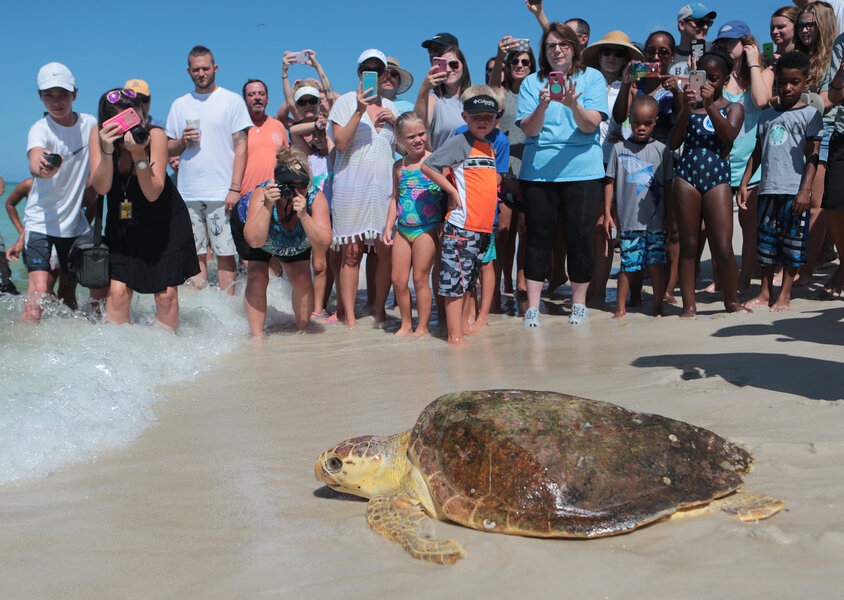Thousands of sea turtle nests buoy hopes for Georgia's rare loggerheads
Loading...
Georgia wildlife officials announced this week that a record breaking number of loggerhead sea turtles have built nests along the state’s coastline, far surpassing Georgia’s conservation goals.
The sea turtle nesting season is not quite over yet in Georgia, yet officials say that they have already counted more than 2,890 sea turtle nests this year along about 100 miles of coastline.
That's good news for the rare loggerheads, which are considered threatened in the Northwest Atlantic Ocean under the Endangered Species Act.
“When you think about the fact that for many years we averaged about 1,000 nests and this year we may be beyond 3,000 ... it suggests an exponential increase,” Mark Dodd, coordinator for the Georgia Department of Natural Resources' Sea Turtle Program, said in a press release.
Female loggerhead sea turtles can weigh up to 400 pounds. And these massive turtles can produce up to 120 hatchlings per nest. Loggerhead sea turtle eggs take about two months to hatch.
The turtle population was under threat less than two decades ago, Savannah Morning News reports. Nest destruction and accidental fishing by-catch threatens the population, but legislative and conservation efforts in recent years have diminished the impact these threats have on the population.
In 2004, loggerhead nesting levels hit a low point, with just 358 nests observed in Georgia. State officials set a target of 2,800 nests per year by 2028 as a benchmark of success for sea turtle conservation efforts. That the population has increased enough for nesting levels to surpass the target 12 years ahead of time is a massive conservation success.
The previous record high was set last year, when over 2,300 sea turtle nests were discovered on Georgia’s coast.
“It’s so exciting,” Kris Williams, director of the Caretta Research Project which has been involved in tagging nesting loggerheads, told Savannah Morning News. “We know we have a long way to go but every year it seems to get better and better.”
Although the season usually peaks in mid-July, turtle conservationists say they haven’t seen a slowdown in nesting rates yet, describing the effort of tagging and counting the nests as “intense.”
Other states in the area, including Florida and both Carolinas, are reporting strong years for the nesting turtle population. Georgia's population, however, is growing noticeably faster than the turtle populations in other states.
“It could be because of something different we did with protection,” Mr. Dodd said. But “all the recovery units are showing similar increases, we just happened to get there a little sooner.”
Once the loggerhead sea turtle population increases by at least two percent each year for 50 years, the species will be eligible to be taken off of the endangered species list.
Dodd says Georgia is on the way to seeing loggerhead sea turtles delisted, though there is still a ways to go.








